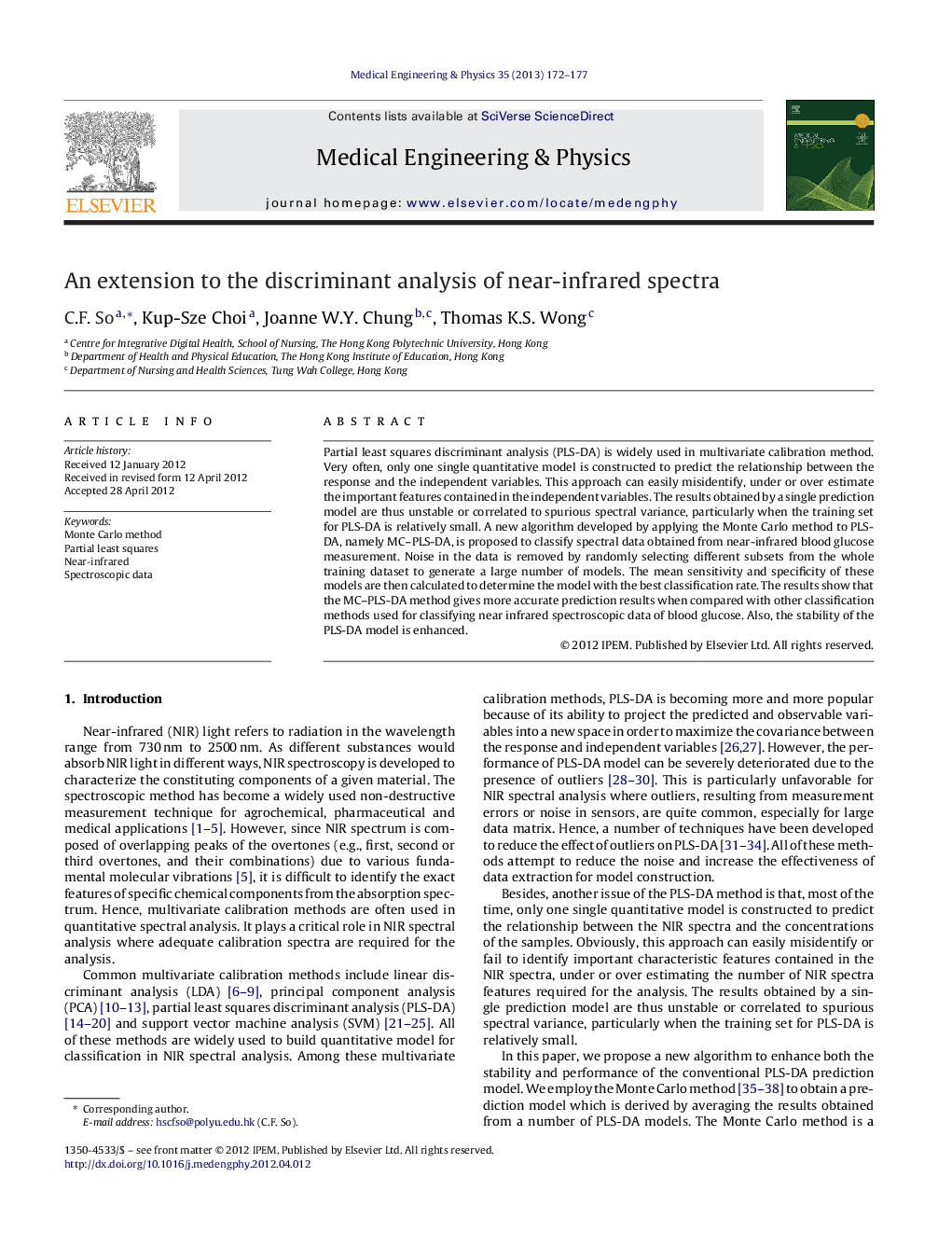| Article ID | Journal | Published Year | Pages | File Type |
|---|---|---|---|---|
| 876240 | Medical Engineering & Physics | 2013 | 6 Pages |
Partial least squares discriminant analysis (PLS-DA) is widely used in multivariate calibration method. Very often, only one single quantitative model is constructed to predict the relationship between the response and the independent variables. This approach can easily misidentify, under or over estimate the important features contained in the independent variables. The results obtained by a single prediction model are thus unstable or correlated to spurious spectral variance, particularly when the training set for PLS-DA is relatively small. A new algorithm developed by applying the Monte Carlo method to PLS-DA, namely MC–PLS-DA, is proposed to classify spectral data obtained from near-infrared blood glucose measurement. Noise in the data is removed by randomly selecting different subsets from the whole training dataset to generate a large number of models. The mean sensitivity and specificity of these models are then calculated to determine the model with the best classification rate. The results show that the MC–PLS-DA method gives more accurate prediction results when compared with other classification methods used for classifying near infrared spectroscopic data of blood glucose. Also, the stability of the PLS-DA model is enhanced.
